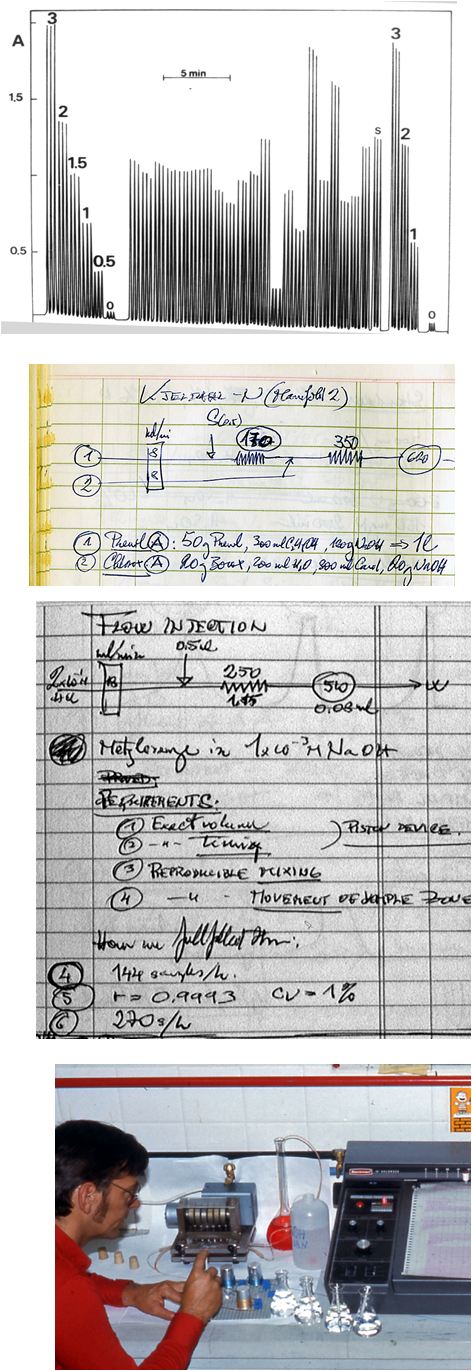Eureka!
5.1.5.
We started with a colorimetry of phosphate, since John needed this assay most urgently. As far as the current wisdom went, it was a hopeless task, since the manual assay protocol required 15 minutes for color development and the AutoAnalyzer method suggested at least 5 minutes for reduction to molybdenum blue. Since an FIA system processes only one sample at a time, we had 1 minute maximum for mixing and reaction, in order to be able to process 60 samples/hr. When we got a peak 60 seconds after sample injection, we kept experimenting, adjusting flow rates, etc, until at the end of the day, we could assay two samples per minute! [2] To our joy, ammonia by indophenol blue worked as well, and soon others became excited by watching our experiments. FIA peaks have a visual appeal, and when we analyzed two identical samples we (of course) got peaks which looked like twins – and that convinced even non chemists who needed their soil or plants assayed. During the following month, Berga summoned his graduate student Elias Zagatto to help us, and we succeeded in automating nitrogen and chloride assays in quick succession [3,4,5]. This was, however not smooth sailing. When we worked on ammonia assays, we stank so badly of phenol that our wives suggested a trip to the pool before we returned home. A member of our team managed to burn out our only spectrophotometer. Vitamin C pills did not work well for phosphate assay, so we requested ascorbic acid from Elo, but our Lufthansa friends were not happy at the prospect of carrying syringes and white powder fro Denmark to Brazil. The CENA library had no chemistry Journals, yet I had reading to do, as it was my task to write the first draft of our paper, and Elo was getting impatient. Since we were injecting samples with a syringe, itwas natural to name the method Flow Injection Analysis. I added Part 1 [1] because it was obvious that there was more to come. How much more, I would have never guessed! In all fairness, it may be said that FIA was conceived in Denmark and delivered in Brazil. Without the enthusiastic support of Henrique (Bergamin), Elias(Zagatto) and Chico (F. J. Krugg), and their continuing innovative contributions, the method would not have achieved the impact it has.
NOTE: numbers in [ ] refer to Hansen’s Database.










